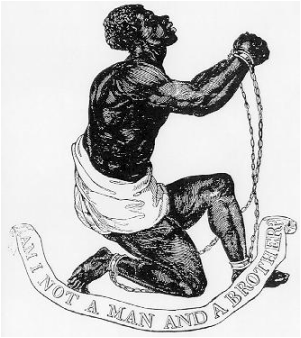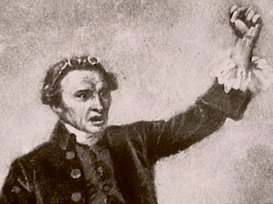
This past fall I participated in Amazing Grace: How Writers Helped End Slavery, a masters level course offered by the Gilder-Lehrman Institute of American History. The course, led by Columbia Professor, and GLI President, James Basker, examined the role of abolitionist writers in the 19th century struggle to end that "peculiar institution." The final project was to compile our own abolitionist writing anthology that could be used in the classroom.
I wanted to share the work I generated during this course as perhaps the primary sources I chose could prove useful in your own classrooms. In this blog "mini-series" (Amazing Grace) I will share with you my reflections, my anthology introductions, and the sources themselves. Most, if not all, of the sources I reference can be found in James Basker's book American Antislavery Writings: Colonial Beginnings to Emancipation.
I wanted to share the work I generated during this course as perhaps the primary sources I chose could prove useful in your own classrooms. In this blog "mini-series" (Amazing Grace) I will share with you my reflections, my anthology introductions, and the sources themselves. Most, if not all, of the sources I reference can be found in James Basker's book American Antislavery Writings: Colonial Beginnings to Emancipation.
Patrick Henry, Letter to John Alsop, 1773
Reflection:
One of the major themes and discussion questions that runs throughout my 7th grade American History class is: How have we become a more perfect union? Taken from the Constitution and used as a mission statement for our nation, my students measure the successes and failures of our democratic experiment. The hardest part of introducing this theme to a group of predominantly African American teenagers is the inherent and obvious hypocrisies that existed in the colonial and revolutionary eras. To this end, I found the Patrick Henry letter, Letter to John Alsop, from January 13th, 1773, to be an incredibly unique and insightful document for inclusion in my classroom.
Henry is refreshingly candid and open in this letter, not just outlining his practical beliefs on slavery but also clearly and freely admitting to failing to put his ideas into practice. His blunt reflection will be particularly accessible to my middle school students in that they too can relate to believing in one ideal but finding it hard to put that into practice – whether for “general inconvenience” or peer pressure.
What I found to be the most significant thing about Henry’s letter was the perspective. He, who was a vocal patriot, could speak of the virtues of liberty and independence but at the same time felt incapable – or perhaps more to the point, unwilling – to extend those ideals to the enslaved Africans. Could he not see clear analogy of the founders and slaves and the king and the colonists? How the king’s tyranny in taxes was in fact less a transgression than the colonists’ tyranny over the body and souls of enslaved peoples? This letter helps to frame two important discussion questions that I engage my students in at this time of study: 1. Did framers consider or debate the extension of rights to more than just white males, and 2. Is there to be sympathy to the king and parliament in the taxation debate?
This letter clearly lets my junior historians in on the thought process of how slavery fits into the Enlightened/Revolutionary Era, while also perhaps providing some insight and perspective on how King George might have viewed the colonists.
One of the major themes and discussion questions that runs throughout my 7th grade American History class is: How have we become a more perfect union? Taken from the Constitution and used as a mission statement for our nation, my students measure the successes and failures of our democratic experiment. The hardest part of introducing this theme to a group of predominantly African American teenagers is the inherent and obvious hypocrisies that existed in the colonial and revolutionary eras. To this end, I found the Patrick Henry letter, Letter to John Alsop, from January 13th, 1773, to be an incredibly unique and insightful document for inclusion in my classroom.
Henry is refreshingly candid and open in this letter, not just outlining his practical beliefs on slavery but also clearly and freely admitting to failing to put his ideas into practice. His blunt reflection will be particularly accessible to my middle school students in that they too can relate to believing in one ideal but finding it hard to put that into practice – whether for “general inconvenience” or peer pressure.
What I found to be the most significant thing about Henry’s letter was the perspective. He, who was a vocal patriot, could speak of the virtues of liberty and independence but at the same time felt incapable – or perhaps more to the point, unwilling – to extend those ideals to the enslaved Africans. Could he not see clear analogy of the founders and slaves and the king and the colonists? How the king’s tyranny in taxes was in fact less a transgression than the colonists’ tyranny over the body and souls of enslaved peoples? This letter helps to frame two important discussion questions that I engage my students in at this time of study: 1. Did framers consider or debate the extension of rights to more than just white males, and 2. Is there to be sympathy to the king and parliament in the taxation debate?
This letter clearly lets my junior historians in on the thought process of how slavery fits into the Enlightened/Revolutionary Era, while also perhaps providing some insight and perspective on how King George might have viewed the colonists.



 RSS Feed
RSS Feed

